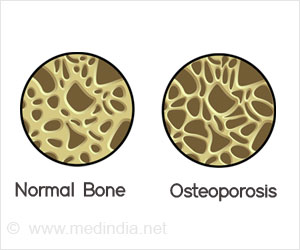It was found that the oral bisphosphonates risedronate and alendronate equally protect against hip fracture during a 2-year drug holiday. However, the risk increases slightly for those taking a break from risedronate.
“This study highlights the benefits of closer monitoring and follow-up around two years after starting a drug holiday, particularly among patients that were treated with risedronate for only three to five years before their break in therapy,” says Suzanne Cadarette, associate professor at the University of Toronto’s Leslie Dan Faculty of Pharmacy.
According to Osteoporosis Canada, over 2 million Canadians are living with osteoporosis. Alendronate and risedronate are the two most common drugs to treat osteoporosis in Canada. In Ontario, the proportion of osteoporosis patients who take each drug is about the same.
Both drugs have been associated with rare adverse events after long-term use, and because the drugs persist in bone, most patients can safely take a physician-directed “drug holiday,” or a break in taking the medication, after several years of continuous therapy.
But the evidence about the best length of a drug holiday and comparative fracture risk during this time is sparse. Until now, no study has compared the relative benefits of oral bisphosphonates in people with osteoporosis who have taken the drugs for several years.
Risedronate shows a small risk increase compared to alendronate after two years of a drug holiday but low absolute risk.
The research question was developed in consultation with Osteoporosis Canada and was led by Kaleen Hayes, a pharmacist and PhD student in Cadarette’s group at the time of the study. The team, which included bone health physicians, examined whether the risk of hip fracture during a drug holiday differed between patients taking risedronate and those taking alendronate.
With both drugs being covered equally by the Ontario Drug Benefit program, the team had access to comprehensive high-quality health administrative data through ICES that allowed them to identify over 25,000 patients who took each drug for at least three years then had a break in therapy.
They were then able to track and compare the rates of fractures patients experienced overtime during the drug holiday.
The team found that patients who took either drug had a very low risk of hip fracture during the drug holiday. However, after two years of the break from therapy, patients who had been on risedronate had a slightly higher risk than patients who had been on alendronate, though the absolute risk remained low.
Risedronate and alendronate are available in different formulations, which may make one drug a better choice for a particular patient. And Cadarette emphasizes that this study does not support that one is better than another or that patients should switch drugs based on these results.
Rather, this greater awareness of the comparative long-standing benefits of these drugs during a break in therapy helps provide evidence that patients may need to be monitored after two years to inform when they may consider returning to therapy.
“Questions related to long-term osteoporosis pharmacotherapy are of global interest, and our study helps to clarify the relative residual benefits of oral bisphosphonates during a drug holiday,” says Cadarette. Cadarette and Hayes, a new assistant professor at Brown University, are now working to leverage data from Canada and the United States to answer more novel questions about osteoporosis therapy, focusing on providing evidence to inform long-term osteoporosis management.
Source: Eurekalert



